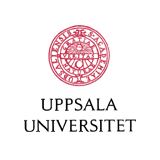|
Maximum a posteriori Deconvolution of Ultrasonic Data
with Applications in Nondestructive Testing:
Multiple transducer and robustness issues.
Tomas Olofsson
PhD Thesis, Uppsala University,
ISBN 91-506-1440-1,
December 2000.
Dissertation in Signal Processing to be publicly examined
in room K23, Magistern, Dag Hammarskjölds väg 31,
Uppsala on December 1 2000 at 1.15p.m.
Faculty Opponent: Prof Joergen Arendt Jensen
Dept of Information Technology,
Technical University of Denmark, Lyngby.
Paper copies of the thesis can be obtained from
Ylva Johansson,
Signals and Systems Group, Uppsala University,
Box 534, SE-75121 Uppsala, Sweden.
- Outline:
-
The thesis deals with processing of signals acquired
during ultrasonic nondestructive testing (NDT) of materials.
By using ultrasound, flaws and discontinuities
in a material can be detected.
Examples are fatigue cracks in metals,
inclusions in cast materials and porosity
in composite materials.
Furthermore, material properties such as density
and stiffness can be estimated using
ultrasound and it can also be used for
thickness measurements.
Altogether, ultrasonic NDT plays an important role
in quality control of structural components
in different engineering areas such as the
nuclear power industry and the aerospace industry.
More on our research on
robust filtering using stochastic error models .
-
Abstract:
-
In the thesis, various aspects of deconvolution of ultrasonic
pulse-echo signals in nondestructive testing are treated.
The deconvolution problem is formulated as estimation of a
reflection sequence which is the impulse characteristic of the inspected
object and the estimation is performed using either maximum a posteriori
(MAP) or linear minimum mean square error (MMSE)
estimators.
A multivariable model is proposed for a certain
multiple transducer setup allowing for frequency diversity, thereby
improving the estimation accuracy. Using the MAP estimator
three different material types were treated, with varying amount of
sparsity in the reflection sequences. The Gaussian distribution is
used for modelling materials containing a large number of small
scatters. The Bernoulli--Gaussian distribution is
used for sparse data obtained from layered structures and a genetic
algorithm approach is proposed for optimizing the corresponding MAP
criterion.
Sequences with intermediate sparsity suitable of
modelling composite materials have been treated using a
prior Gaussian distribution with unknown sample variances.
An heuristic discrete-time model
for modelling dispersion caused by absorption in
plastic composite materials is
also presented. Robustness against inaccurate
impulse responses or position errors in the multiple transducer
setup is treated by letting the model of the unknown system belong
to an uncertainty set of possible models. The robustness is
accomplished by designing linear MMSE estimators that
minimize the average
estimation error over the models in the
uncertainty set.
It is verified experimentally that the robust
estimators outperform candidate estimators on
the average.
The problem of transducer normalization encountered when
calibrating an input signal to an
automatic characterization system is also treated.
It is shown that the solution to this problem decouples into the
solution of the deconvolution problem followed by a trivial filter operation.
-
Keywords:
-
Ultrasonic pulse-echo testing, nondestructive
testing, maximum a posteriori estimation, linear minimum mean squared
error estimation, robust filtering, multivariable filtering, sparse
deconvolution
|
Main
entry in list of publications
|
|

